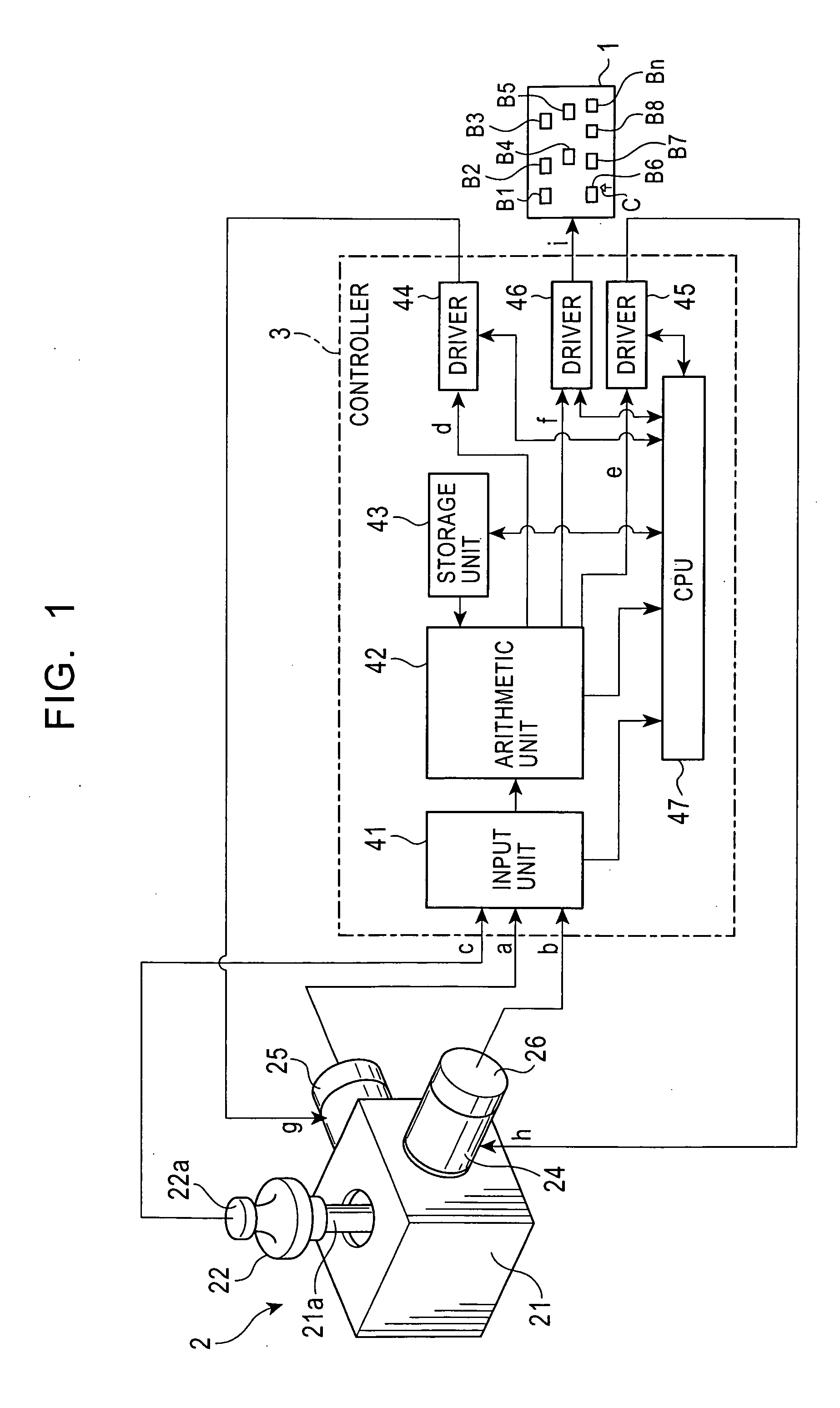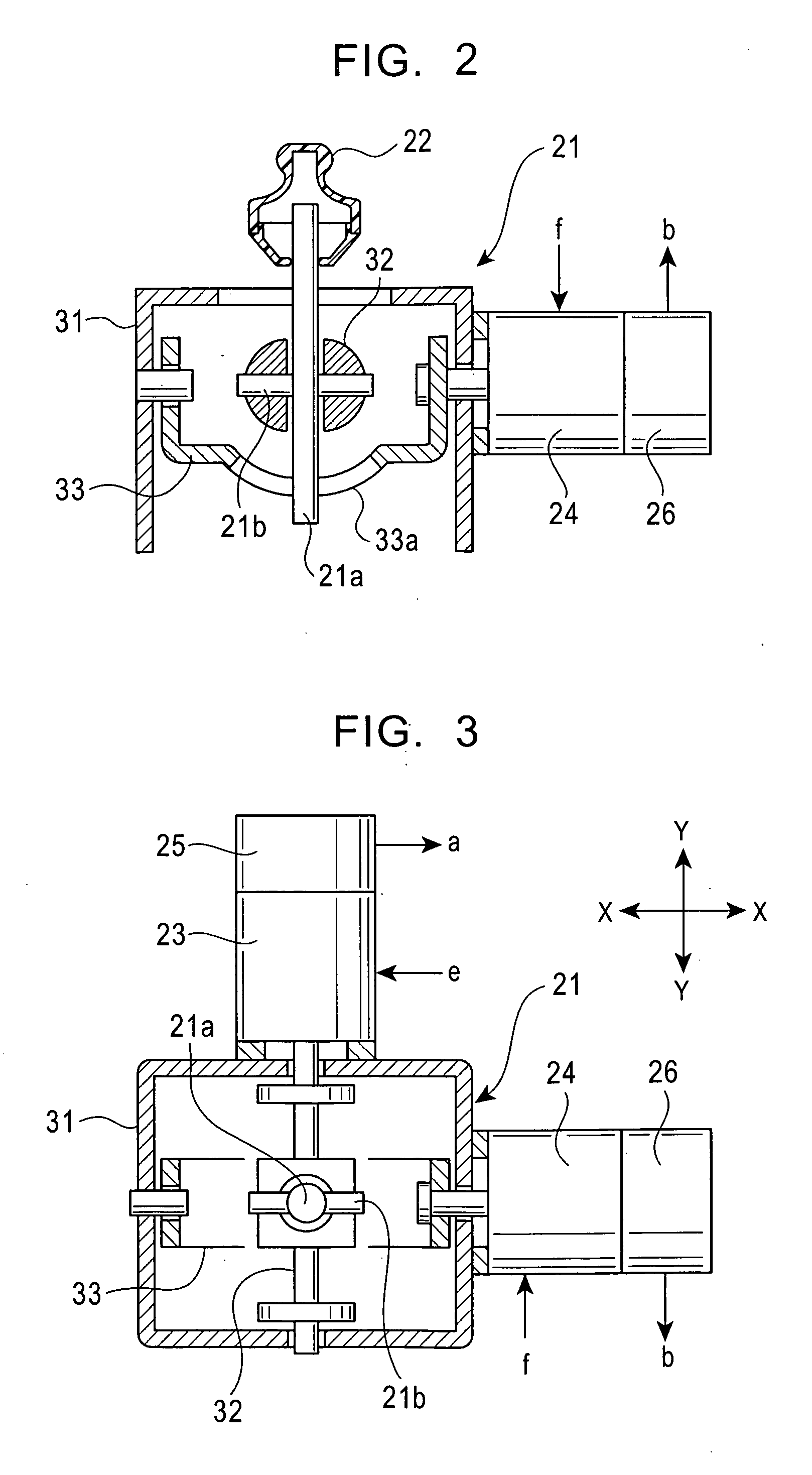Force-feedback input device
a technology of input device and input force, which is applied in the direction of mechanical pattern conversion, instruments, cathode-ray tube indicators, etc., can solve the problems of reducing the operability of input means, unable to smoothly move the cursor in the desired direction, and unable to disclose a control method of attractive force, so as to prevent abrupt change in the strength of attractive force on the borderline, reduce the distance between the cursor and the borderline, and attract
- Summary
- Abstract
- Description
- Claims
- Application Information
AI Technical Summary
Benefits of technology
Problems solved by technology
Method used
Image
Examples
Embodiment Construction
[0033] Embodiments of the present invention will be described below with reference to FIGS. 1 to 8. FIG. 1 is a block diagram of a force-feedback input device according to an embodiment of the present invention. FIG. 2 is a side cross-sectional view of input means according to an embodiment. FIG. 3 is a top plan cross-sectional view of the input means according to the embodiment. FIGS. 4A, 4B, and 4C are diagrams explaining the operation of the force-feedback input device according to the embodiment. FIG. 5 is a vector diagram illustrating a change in an attractive force exerted on the input means when two buttons are displayed on display means. FIG. 6 is a schematic diagram explaining a scheme for controlling the attractive force in the input means according to the embodiment. FIGS. 7A and 7B are graph charts illustrating the change in an attractive force exerted on the input means when two buttons are displayed on display means. FIG. 8 is a schematic diagram of an attractive area ...
PUM
 Login to View More
Login to View More Abstract
Description
Claims
Application Information
 Login to View More
Login to View More - R&D
- Intellectual Property
- Life Sciences
- Materials
- Tech Scout
- Unparalleled Data Quality
- Higher Quality Content
- 60% Fewer Hallucinations
Browse by: Latest US Patents, China's latest patents, Technical Efficacy Thesaurus, Application Domain, Technology Topic, Popular Technical Reports.
© 2025 PatSnap. All rights reserved.Legal|Privacy policy|Modern Slavery Act Transparency Statement|Sitemap|About US| Contact US: help@patsnap.com



